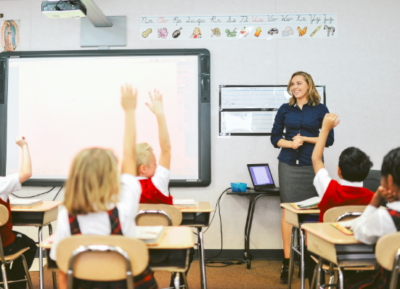Believe it or not, preschool teaching methods are not that different from the methods used to teach older kids. They are simply modified to make them more engaging and designed to be on a younger child’s level. Below, you’ll learn about three new methods of learning that you’ll find being used in preschools across the country and how they apply to even the littlest pupils.
Spaced Learning
Spaced learning is a teaching method that seeks to do away with the “teach it once and move on” method. Essentially, material is condensed and spread out over the course of three lessons complete with 10-minute breaks. The goal is to get kids to quickly cycle through activities, and this is especially suitable for younger children who often struggle to stay focused without moving around. Studies have shown that this method is quite beneficial for the brain cells that create connections to form memories – even in very small kids.
For preschoolers, such a learning environment helps them relax. They don’t feel pressured to stay in their seats for long periods of time, and they get to “blow off steam and energy” at regular intervals. This means the time they do spend learning their ABCs or colors is far more productive and beneficial.
Flexible Fridays
The biggest problem with conventional education is the need to try to provide an experience that works for all the kids in a classroom. Flexible Fridays can help certain students by allowing teachers to focus one full day of the week on a subject that several students find challenging. In high school, this course might be chemistry or world history, but in preschool, things are different.
In this case, flexible Friday could be a playday, it could be a party day, or it could be a free-play day with a bit of structure here and there. Preschoolers need structure, but they also need to be given an opportunity to play what they like or do what they like, and a flexible Friday teaching method can make this easier.
Engagement Teaching
Finally, engagement teaching focuses on real-world education rather than classroom-based lecture, and this can be applied even at the preschool level. For example, teachers can take preschoolers on field trips to nearby forests and point out all the different animals, birds, and types of trees. This would be viewed as engagement teaching at this level because it helps even young kids expand their vocabularies and learn more about the world around them.
Teachers can also take students on field trips to local businesses to see how their favorite foods and other items are made, repaired, etc. This real-world knowledge is important for kids, especially when they are young, and they are still curious about everything around them.
Modern-day preschool teaching methods reflect the very same methods currently used in middle and high schools across the country, but they are adapted to suit a younger audience with a much shorter attention span. For now, these methods seem to do a good job of keeping kids engaged, all while allowing them to move around and have fun.

